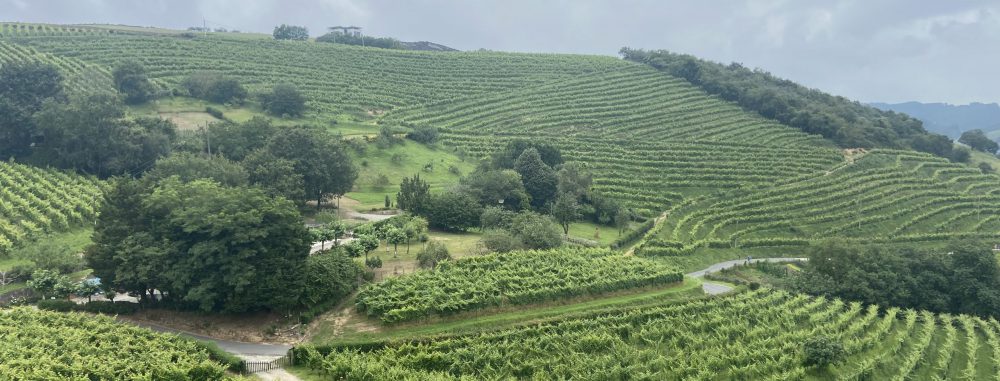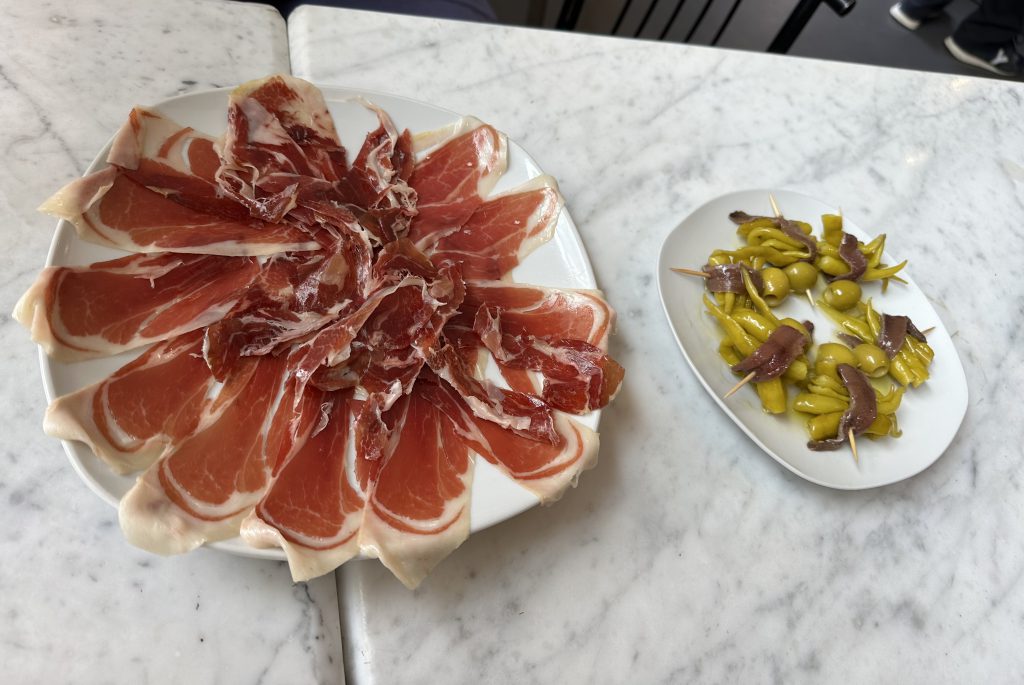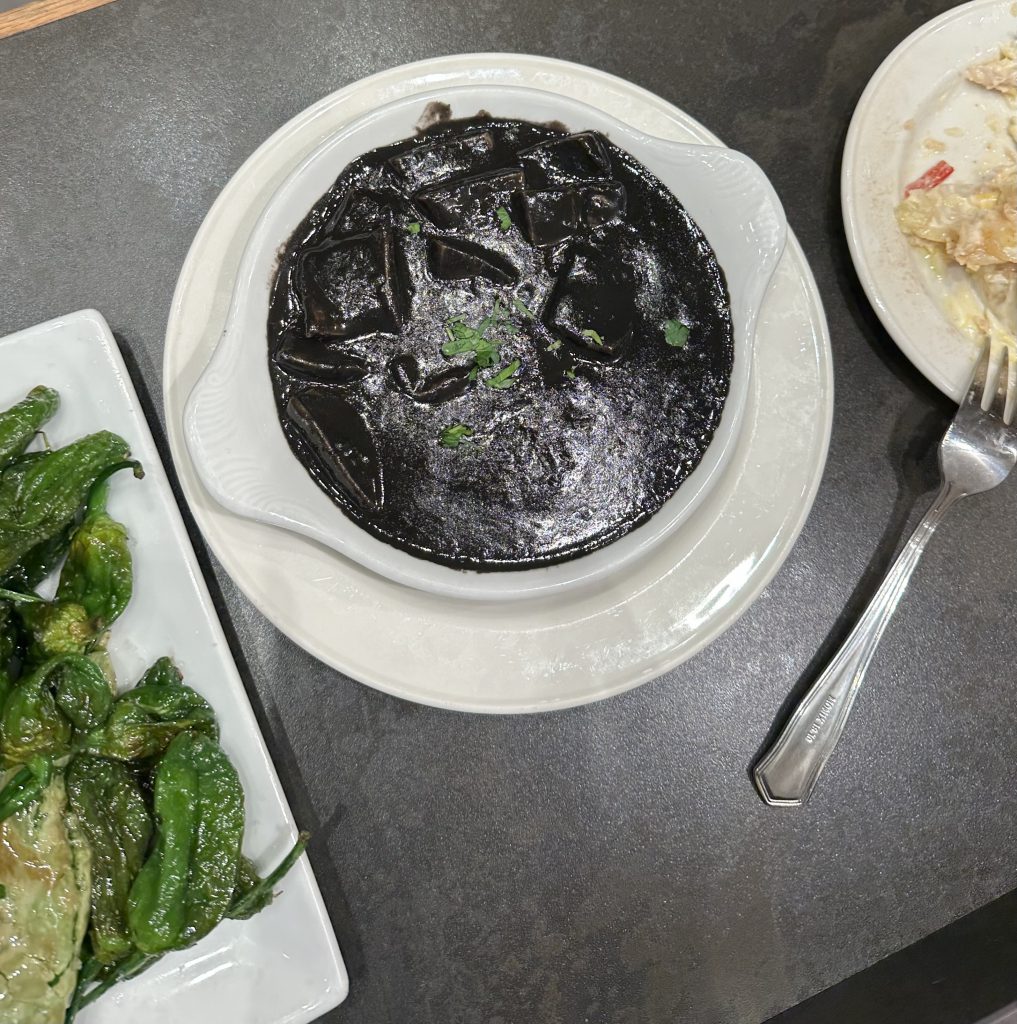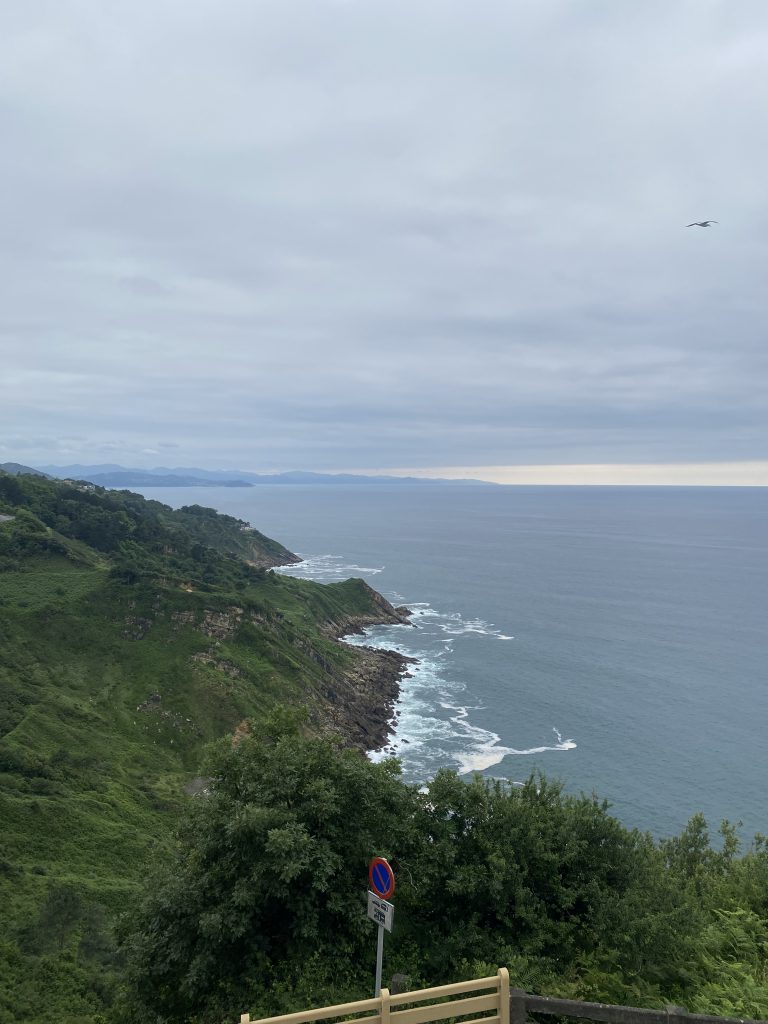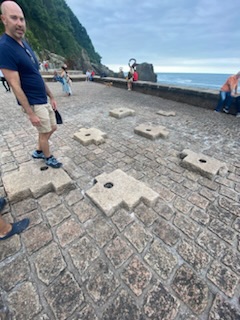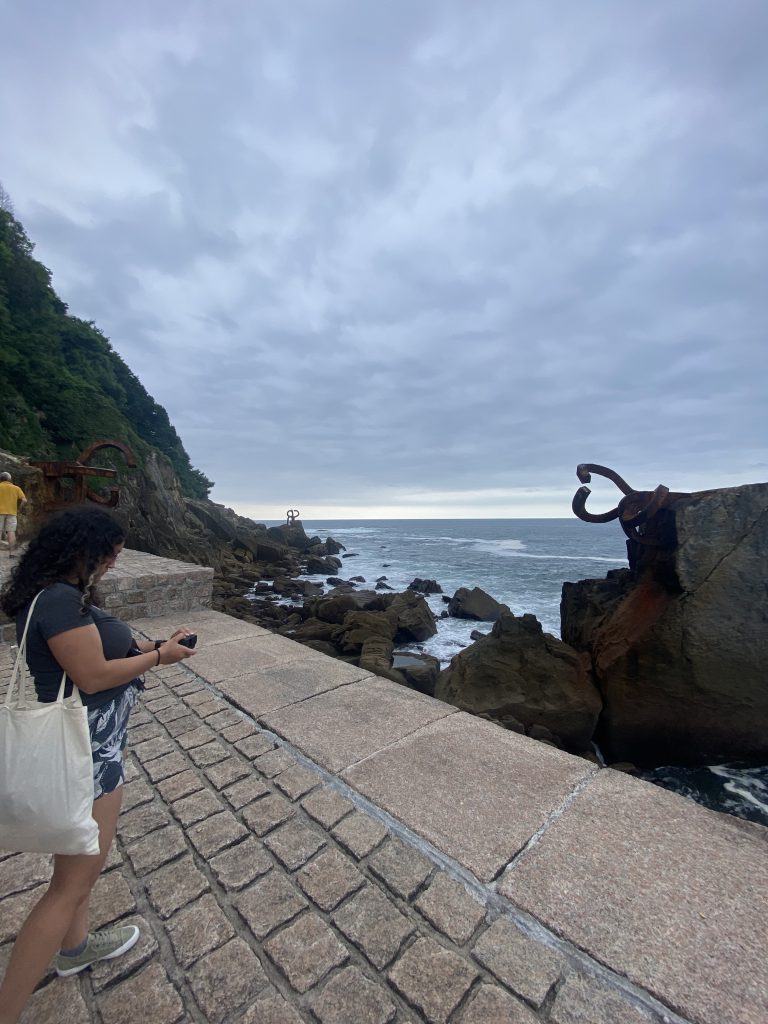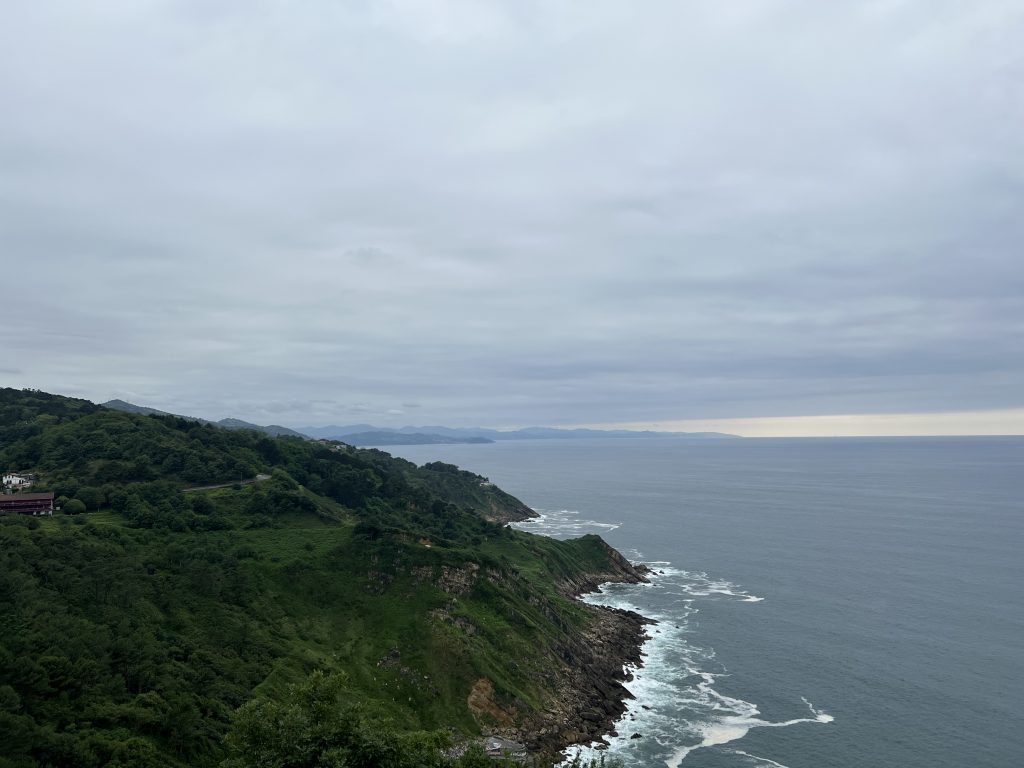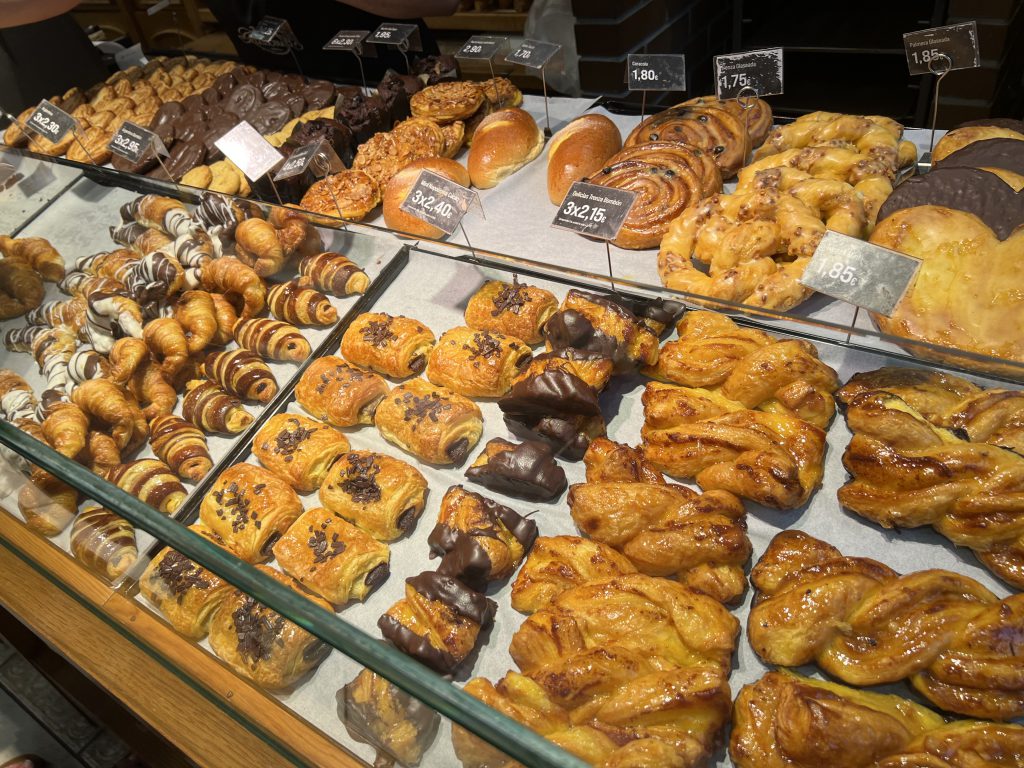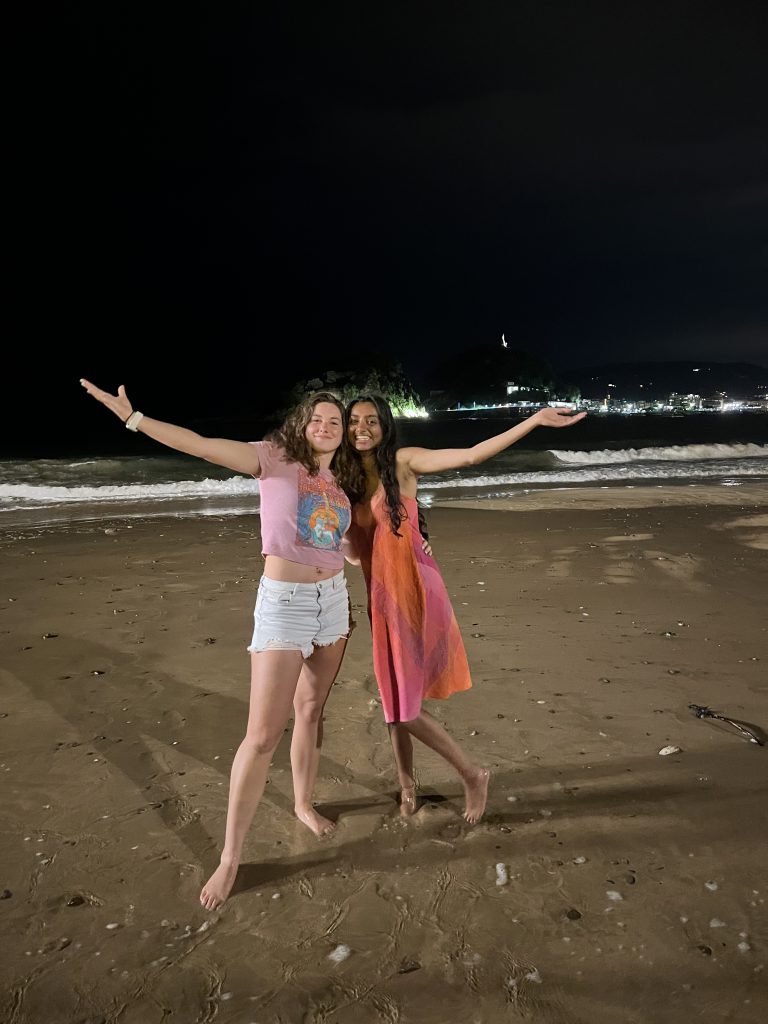When people say that San Sebastián is the world’s food capital, they are not wrong. Initially, before going on this study abroad trip, I wondered what the food would be like because of all the praise it receives but San Sebastián never disappoints and has lived up to the hype. As we first entered the city of San Sebastián, I could not help but see all the restaurants and bars that are present with all of them having their own unique style and foods. However, there is one thing that always stayed consistent throughout each restaurant/bar and that was Pintxos.
First, before I dive into all the fantastic foods from this day, let’s explain what a pintxo really is. A pintxo is a small snack that is commonly eaten in bars with a drink. Usually, they are presented with skewers or toothpicks and can include foods like meat, seafood, olives, peppers, and bread. Pintxos are a cultural staple food throughout the Basque Country, but especially in San Sebastián.
For this tasting tour, we decided to go to the neighborhood of Gros. For many of us, this was our first time in this specific area since in most cases we only would go to the Old Town but Gros was an inviting location with mostly locals roaming the streets. It is surrounded by the beautiful, Zurriola Beach where many of the surfers go but for this day we came for the excellent pintxo bars of Gros.


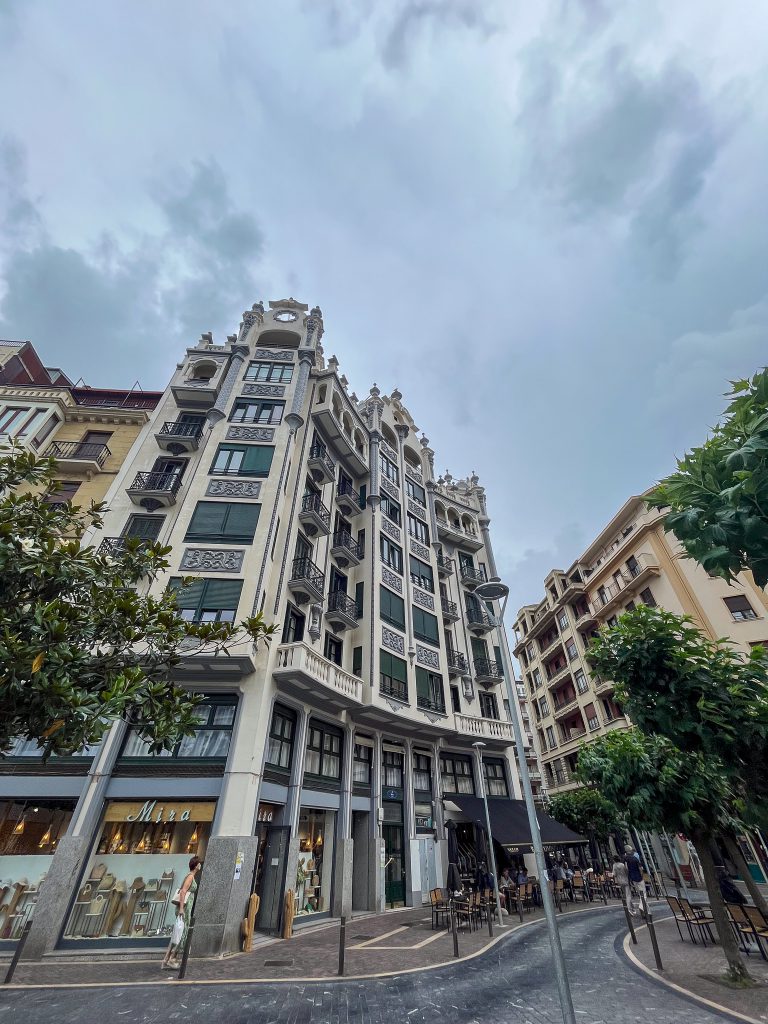
To start off our Pintxo tasting tour, we met Professor Zabalbeascoa at Bodega Donostiarra Gros where we tried one of the most famous and first pintxos to be created, “La Gilda”. First, just by looking it did not look too appetizing because it consisted of guindilla peppers, manzanilla olives, and anchovies but of course, the group had to be adventurous and try it for the culture! For the taste, it was not bad at all but I would say that it had a strong pickled and salty flavor which surprisingly worked and is worth trying! Next up, we got a raciones of the bacalao or salted cod which was one of my favorites from this tasting tour. The quality of this was amazing because of how delicate and juicy the cod was, and the hint of salt topped it off. Also, we tried a tomato salad which definitely surprised me because of how fresh and crisp the tomatoes were. They were also covered with oil and salt to give them that extra taste as well which made it that much better. Another dish that we had was the Ensalidilla rusa which reminded me of a really delicious potato salad with anchovies on top. The flavors were bright and tasted really well alongside bread because the flavors balanced each other. Finally, for the last dish at this restaurant, we got a brocheta de pulpo which basically was a large skewer with huge shrimp, octopus, and a variety of vegetables with a potato being doused with the dripping oils from the skewer. The presentation of this dish was absolutely amazing. The taste of the seafood and vegetables was very fresh and it had a delightfully grilled taste. All this food was accompanied by a glass of a popular white wine called Txakoli, which was a perfect way to have these delicious foods in the Gros neighborhood.


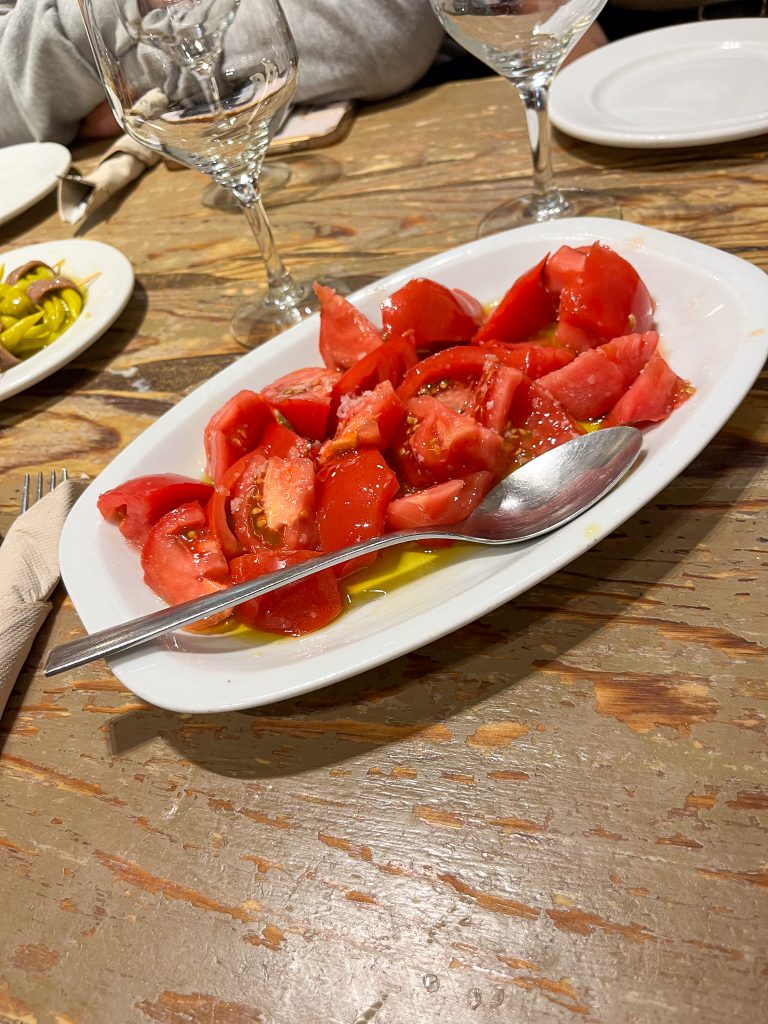

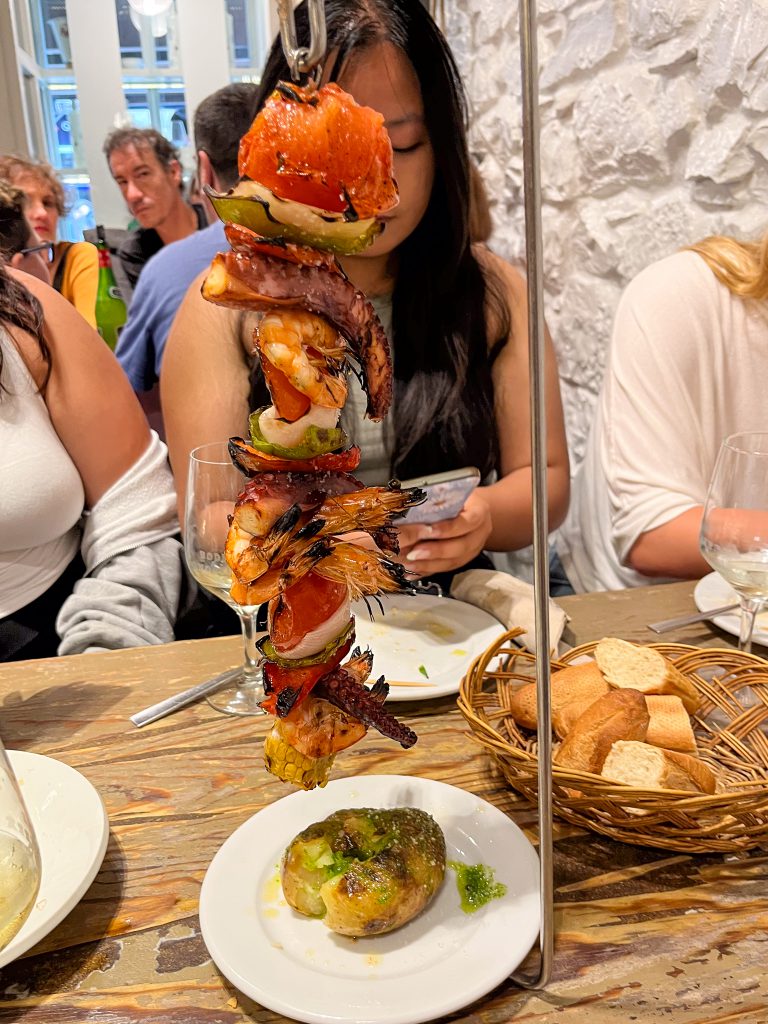
For our next location, Professor Zabalbeascoa brought us to JJ Janari Jauregia which was a fairly new bar/restaurant that opened up recently. Like most other bars this place had the pintxos displayed in the front but we got a table in the back and the interior of the restaurant felt very modern. At this restaurant, we got a Tortilla and each person in our group got a choice of a Pintxo. First, the tortilla is a very popular dish here in San Sebastián and is similar to a giant omelet but cooked a lot differently with it being filled with potatoes. This dish itself filled up everybody and was also very delicious with it being perfectly cooked on the outside while the inside being gooey with all the potatoes oozing out. For the pintxo I selected, I decided to be confident and got a Morcilla which is a blood sausage. Initially, the morcilla was frightening. However, it was a lot better than I expected when trying it out. It was definitely a unique taste but if I had to describe it I would say it was meaty and slightly tangy. Another pintxo that was ordered that caught my eye was a Tuna Heart Bao that Professor Z ordered which was definitely interesting. With this food, we were drinking a cider called Cidra which had a very crisp taste. Besides how great the food was here, I noticed how friendly the workers were because the service was incredible and it felt very comfortable in the restaurant’s environment.

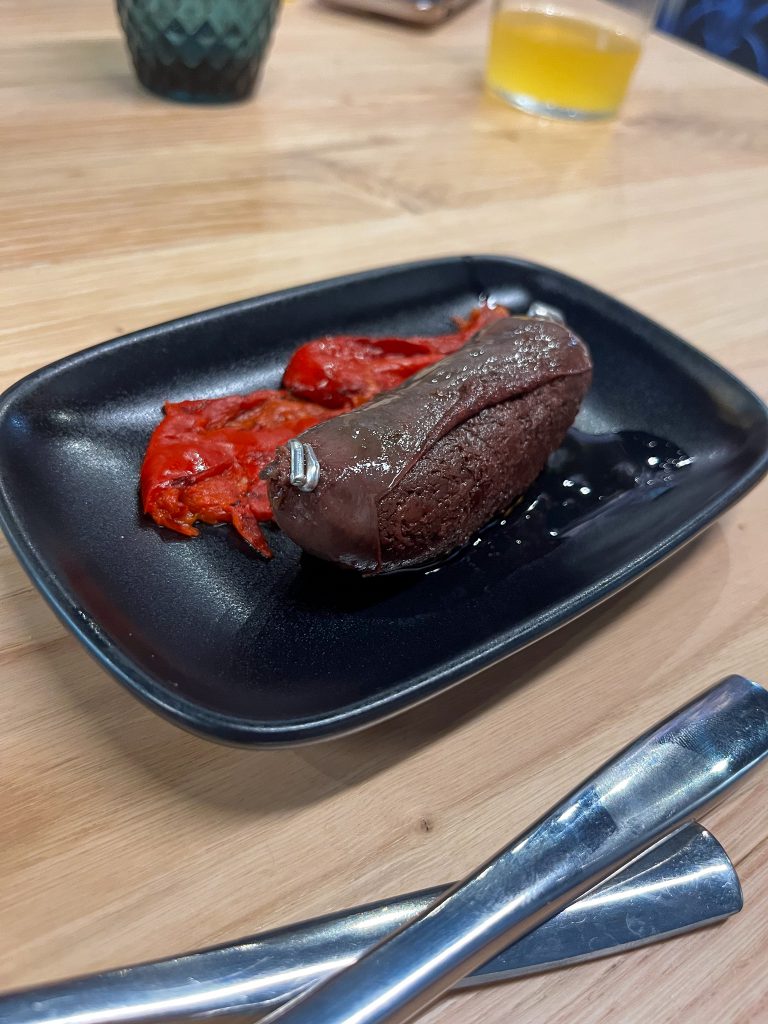
The final bar/restaurant that we went to is called Xarma. This place has a Michelin recommendation and a Guía Repsol so it was definitely exciting trying this place out. However, when we arrived they were about to close so we only had the chance to try out a few pintxos. The first pintxo we tried was a Gilda Sushi which is maki sushi with olive oil pearls, anchovy caviar, and wakame mayonnaise. This bite-sized piece of sushi was slightly salty but delicious. It was nice to see this combination of sushi and pintxos because it just shows how the chef for Xarma is making them more unique. Also, another pintxo that most of us got at this bar was Tataki de Solomilli which included Sirloin Tataku, with carrot-vanilla cream, homemade pickles, and wasabi nuances. This was probably one of the other best food items I had this day because of how excellent the quality of the steak was. Also, the presentation looked super elevated and the flavors as well. Even though we were slightly in a rush, this bar/restaurant seemed very unique which is why I enjoyed this place the most.
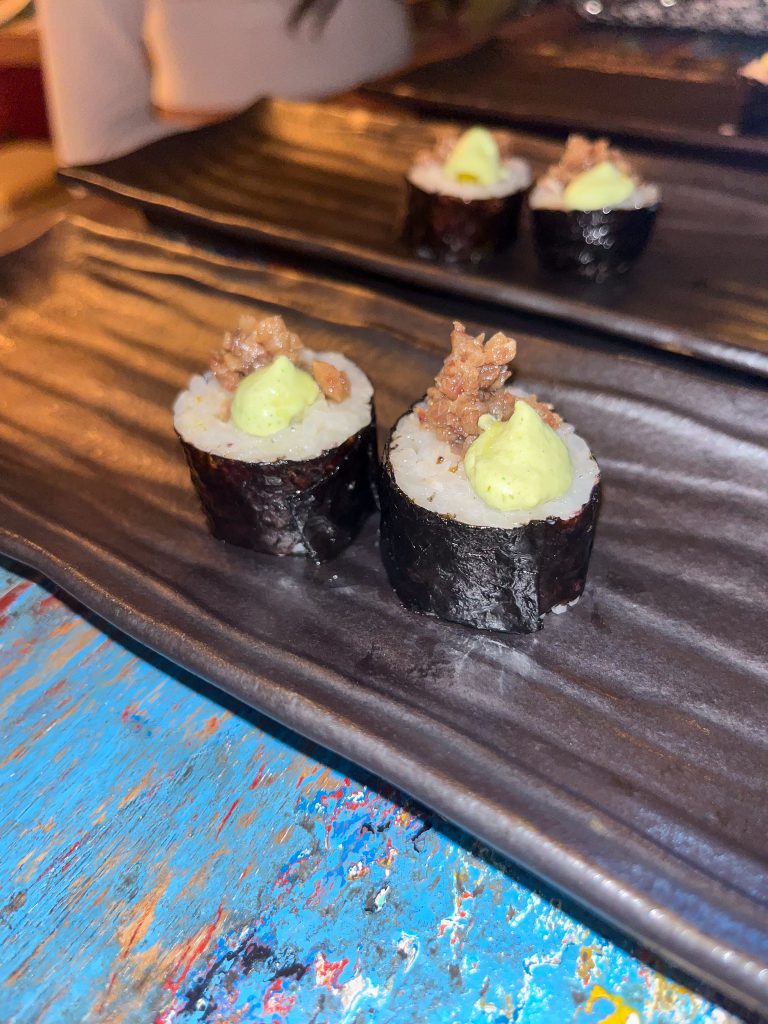

To end off this delicious tasting tour, Professor Zabalbeascoa brought us to two locations for dessert. The first location was a Gelato place called Papperino Izozkiak which is arguably the best gelato in San Sebastián. This place had a wide variety of different flavors but I decided to go with Tarta de Manzana (apple pie cheesecake) and Pistachio. Of course, it was as creamy and flavorful as always and I do not think that I will ever get tired of getting gelato! For the second location, we went to a very homey cafe called The Loaf where some of us got café con leche (coffee with milk) and basque cheesecake for all of us to share. As someone who does not drink coffee much even at home, I have learned to really enjoy it, especially here where it is simple yet tasty. For the basque cheesecake, it was as amazing as it looked because of how soft and flavorful it is. Unlike cheesecake in America, the basque cheesecake has no crust but instead, the burnt sides of the batter are the crust which added texture and flavor to this dessert. It was a perfect way to end this tasting tour!

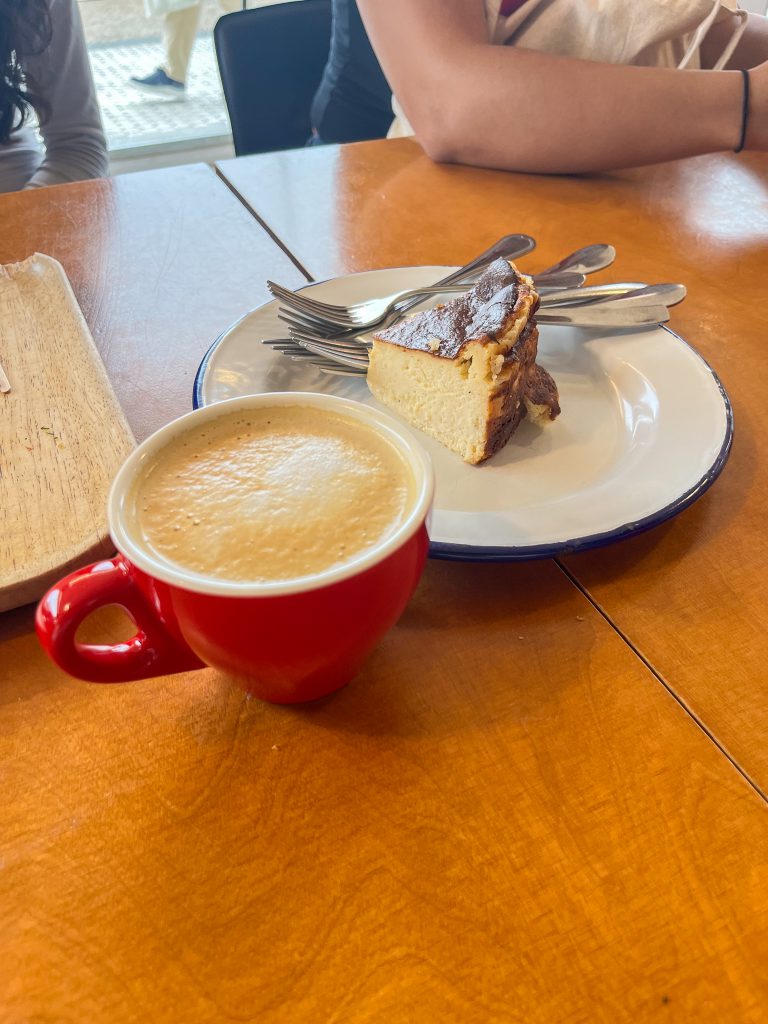
All the different types of food we ate on this pintxo tasting tour, opened up my view on food as a whole. I quickly realized that here in San Sebastián, most of the dishes are prepared and plated simply which allows the natural flavors of the ingredients to shine. A prime example of this is pintxos because of how simple they are. I knew that coming to the Basque country would introduce me to many new and beautiful foods but did not expect to like almost everything. It was also interesting to see how different chefs would take their own spin on pintxos and enhance them into a more modern style. This Pintxo tasting tour will definitely be one of my favorite things from this study abroad because people are absolutely correct when they say San Sebastián is the food capital of the world!
